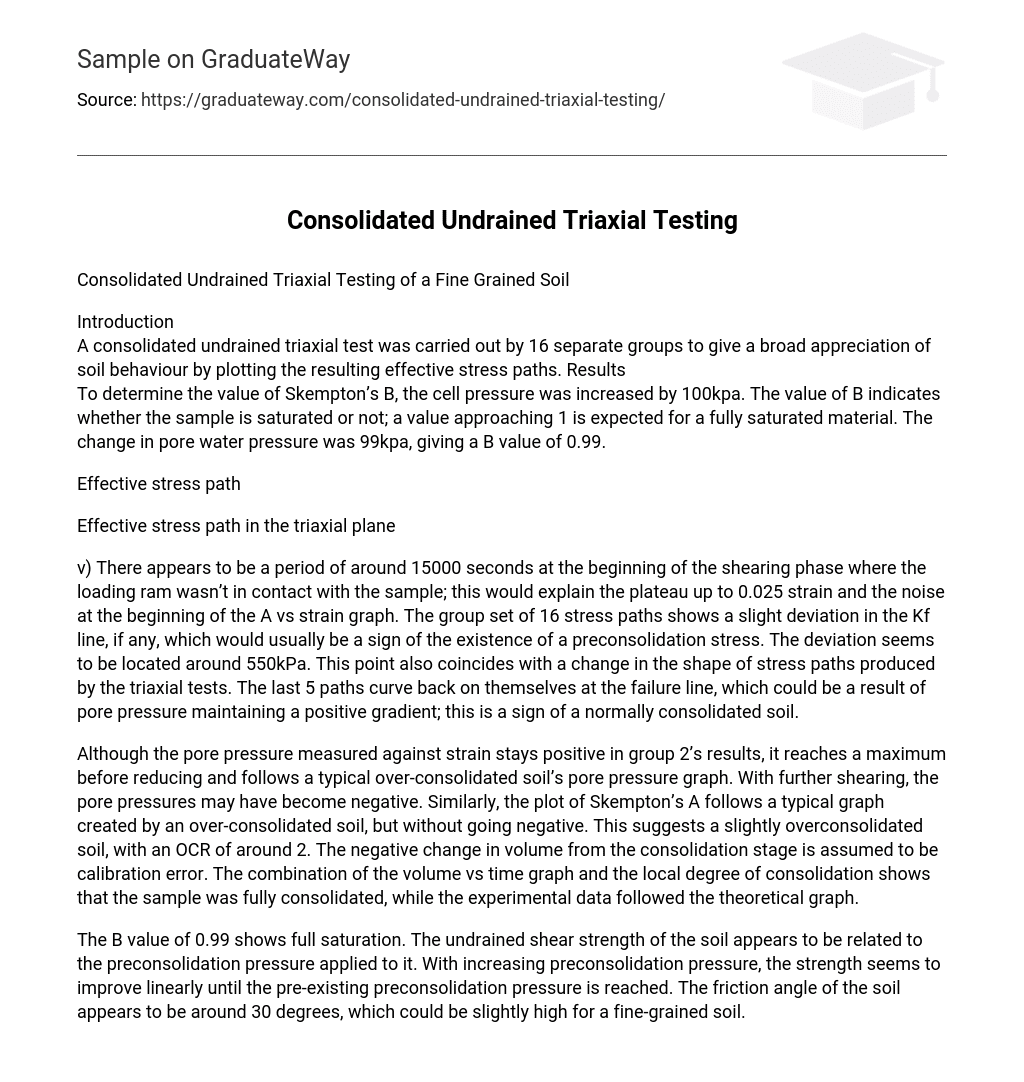Introduction
A consolidated undrained triaxial test was carried out by 16 separate groups to give a broad appreciation of soil behaviour by plotting the resulting effective stress paths.
Results
To determine the value of Skempton’s B, the cell pressure was increased by 100kpa. The value of B indicates whether the sample is saturated or not; a value approaching 1 is expected for a fully saturated material. The change in pore water pressure was 99kpa, giving a B value of 0.99.
Effective stress path in the triaxial plane
There appears to be a period of around 15000 seconds at the beginning of the shearing phase where the loading ram wasn’t in contact with the sample; this would explain the plateau up to 0.025 strain and the noise at the beginning of the A vs strain graph. The group set of 16 stress paths shows a slight deviation in the Kf line, if any, which would usually be a sign of the existence of a preconsolidation stress. The deviation seems to be located around 550kPa. This point also coincides with a change in the shape of stress paths produced by the triaxial tests. The last 5 paths curve back on themselves at the failure line, which could be a result of pore pressure maintaining a positive gradient; this is a sign of a normally consolidated soil.
Although the pore pressure measured against strain stays positive in group 2’s results, it reaches a maximum before reducing and follows a typical over-consolidated soil’s pore pressure graph. With further shearing, the pore pressures may have become negative. Similarly, the plot of Skempton’s A follows a typical graph created by an over-consolidated soil, but without going negative. This suggests a slightly overconsolidated soil, with an OCR of around.
The negative change in volume from the consolidation stage is assumed to be calibration error. The combination of the volume vs time graph and the local degree of consolidation shows that the sample was fully consolidated, while the experimental data followed the theoretical graph.
The B value of 0.99 shows full saturation. The undrained shear strength of the soil appears to be related to the preconsolidation pressure applied to it. With increasing preconsolidation pressure, the strength seems to improve linearly until the pre-existing preconsolidation pressure is reached. The friction angle of the soil appears to be around 30 degrees, which could be slightly high for a fine-grained soil.





